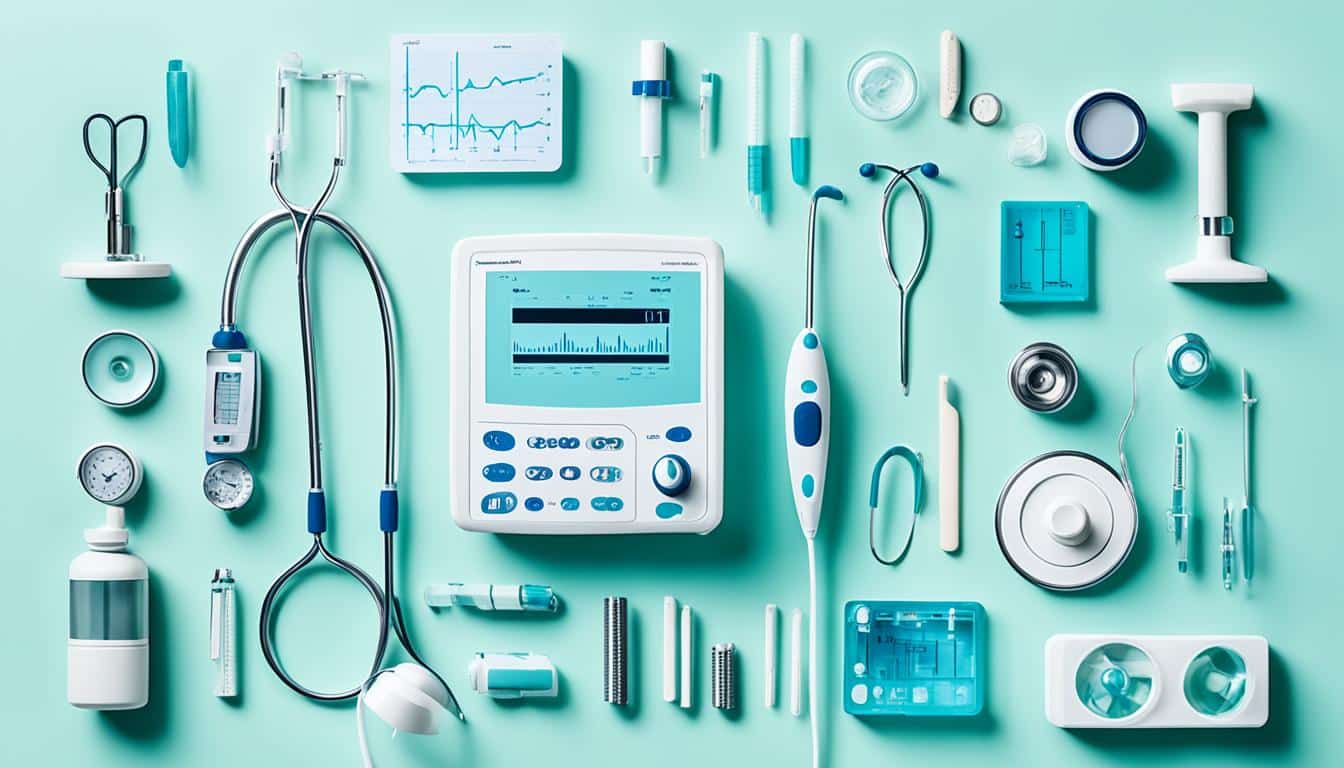Medical Laboratory: today, laboratory testing is everywhere. It’s done in large labs and at home. People are more hands-on with their medical care, understanding lab work. Each lab is different, and they all have their own tests. What affects this? The type and amount of tests they do, their technology, and their team. Knowing the differences helps us understand the many laboratory tests.
Understanding the Different Testing Locations
Hospital Laboratory
Almost every hospital has its laboratory. They are big in busy places, sometimes checking hundreds of samples a day. They do all kinds of tests, from quick heart attack checks to lots of electrolyte tests. These labs help all patients in the hospital and many visiting doctors. Inside, they have different sections for tests. For example, there’s microbiology and blood banking. Some tests go to bigger, specialized labs if they’re not done often at the hospital.
Independent Reference Laboratory
Reference labs are private and do lots of regular and special tests. They get most of their work from doctors’ offices and hospitals. They are used for rare or complex tests. Since they are often far, people usually don’t visit directly. But, at times, you might if your doctor wants more specialized tests done. Many insurance plans require you to use a specific lab.
Public Health Laboratory
These laboratories are part of state and local health departments. They focus on detecting and stopping diseases and hazards. They check for diseases in communities, investigate food or water issues, and screen newborns. Some tests are very unique, looking at specific disease strains. They are crucial in emergencies, working closely with national health groups. Many different labs work together in these times for everyone’s health.
Point-of-Care Testing
Laboratory tests can also happen right where you are getting care, not in a separate laboratory. This is becoming more popular as health care focuses on people’s needs and quick results. Situations where these tests are done range from homes to cruise ships. They are used for many types of health issues, and the technology for these tests is getting better. For example, you might do a blood sugar check or a pregnancy test yourself.
Direct Access Testing (Direct to Consumer)
Home Testing
Direct access testing means you can order your own laboratory tests. This does not need a doctor’s order. It has become more common as people are eager to be involved in their health. A lot of states in the U.S. allow this kind of testing. Tests you do at home, like for cholesterol or pregnancy, are a common type.
Getting these tests helps avoid doctor visits and gives privacy. But, you usually have to pay yourself as insurance might not cover it. This kind of testing can be bought easily, maybe online. While it’s convenient, remember to be careful with your health information from these tests. They might not always be 100% accurate.
Key Takeaways
- Medical laboratories perform a wide range of laboratory tests in various settings, from hospital labs to public health labs and reference labs.
- Point-of-care testing allows for medical tests to be performed outside of a central laboratory, providing immediate information to patients and healthcare providers.
- Direct access testing, or direct-to-consumer testing, enables individuals to order laboratory tests without a healthcare provider’s order, allowing for more proactive health monitoring.
- Blood tests are a common medical test that provide critical data for diagnosing and treating a variety of medical conditions.
- Medical laboratory professionals, including medical laboratory scientists and technologists, play a crucial role in the laboratory testing process and in supporting accurate medical decisions and treatment.
Understanding the Different Testing Locations
Medical tests happen in many places, each focusing on different needs. Hospital labs, reference labs, and public health labs all work hard to keep us healthy. They support patient care and help ensure public health.
Hospital Laboratory
Hospitals have labs that are an important part of healthcare. They often do emergency tests and check us quickly when needed. For those in the hospital or closely working with the hospital, these labs are used a lot. They test things like heart attack markers and electrolytes.
A hospital’s lab might have different sections depending on the type of test. For instance, they may have areas for microbiology, hematology, chemistry, and blood banking. Others might focus on tests with special machines or do detailed cell and tissue checks. Some tests go to reference labs if they’re not common at that hospital.
Independent Reference Laboratory
Reference labs are more private and focus on a lot of testing, both routine and special. They mainly get tests from doctors’ offices and hospitals for things that need particular carefulness. Although you might never visit a reference lab, you’ve probably heard about them. Maybe not everyone goes, but some health insurance plans make you use certain labs.
Public Health Laboratory
Public health labs are focused on keeping communities healthy. They help diagnose diseases and watch out for health dangers, like bad diseases spreading or harmful substances in water.
These labs do tests that clinical labs might not, like special DNA checks. They help in big emergencies, like identifying dangerous germs in bioterror attacks. Together with big organizations like the CDC, they form the Laboratory Response Network (LRN). This network is ready to act in case of bad health events or attacks.
Point-of-Care Testing
Laboratory tests may also be performed at the point of care (POC). This means not in distant labs but wherever you are getting care. Now, tests at the point of care are common. They cover many health fields and can happen at various places. This includes your home, the doctor’s office, the emergency department, and even on a cruise ship.
POC testing is becoming more popular. It’s because healthcare places a bigger focus on people’s needs. Also, technology now offers small and easy-to-use testing devices. You can conduct common tests like blood glucose monitoring and home pregnancy tests easily. There’s also hemoglobin, fecal occult blood, and rapid strep tests available.
All tests at POC must meet high quality standards. They need to be as good as those done in big labs. With the rise of new testing devices, point-of-care testing is getting even more widespread. This is because it offers results right away. It helps both you and your healthcare team with faster medical care.
Direct Access Testing (Direct to Consumer)

Direct access testing (DAT) lets people order lab tests themselves, no need to consult their doctor first. It’s becoming more common because of people’s interest in health.
This method is called direct-to-consumer (DTC) or patient-authorized testing. It lets people play a bigger part in their health. Almost all U.S. states allow some form of direct access testing.
Home Testing
Tests you do at home without a doctor’s prescription are part of DAT. This includes simple health checks like blood tests, checking cholesterol, and diabetes screening. It also covers throat and urine tests, pregnancy tests, and more special tests like genetic tests.
Home tests can be bought over-the-counter, online, or through the mail. They are easy and private, but results might not always be right.
This way of getting tested can save on doctor visits and give quick info on health worries. But, it’s usually on you to pay. Health insurance often doesn’t cover these tests.
Home tests are convenient and private. They usually give results fast. Yet, the reliability of these tests can vary. So, it’s important to be careful when using them.
What Are Blood Tests?
Blood tests are important in healthcare and can be part of a yearly checkup or when you’re not feeling well. They tell a lot about your health. You might have one because your doctor thinks it’s time for a checkup or you’re showing symptoms. Your blood contains clues about your health. This makes blood tests a key tool for doctors. If you might be sick or have a certain condition, your doctor will want to check your blood. They can also use blood tests to see if you might get sick in the future. This is called a genetic analysis.
When Would I Need to Have a Blood Test?
Blood tests don’t give the full story of your health, but they offer a snapshot. This snapshot helps your doctor decide if more tests are needed. For example, blood tests can show if your blood is normal or not. They can point out if you have low levels of certain things in your blood. This could hint at potential health issues. Some blood tests are good at finding signs of cancer, like tumor markers do.
What Do Blood Tests Show?
Blood tests highlight changes happening inside your body. They are a snapshot of your health at a moment in time. Doctors might need to do more blood tests to understand the full picture. These tests can reveal if there are issues with your blood, like low red blood cell count. Or, they can indicate if you have too much of certain substances in your blood. This might show that something is off in your body’s processes. Some blood tests are great for spotting cancer early.
Common Blood Tests
Complete Blood Count (CBC)
A complete blood count (CBC) is a key blood test. It checks things like red blood cells, white blood cells, and platelets. These numbers tell doctors a lot about your health. The CBC also looks at your hematocrit, hemoglobin, and other important blood levels.
Basic Metabolic Panel
A basic metabolic panel (BMP) gives a snapshot of your health. It looks at levels of substances in your blood. This test checks your blood sugar, calcium, and kidney function, among other things.
Comprehensive Metabolic Panel
A comprehensive metabolic panel (CMP) is like a BMP, but more detailed. It includes tests for liver and kidney function too. For example, doctors look at albumin, bilirubin, and other levels to learn more about your organs.
Electrolyte Panel
Electrolytes are minerals that help your body work right. An electrolyte panel measures these important minerals. This test can show if your heart, kidneys, or lungs might be having trouble.
Disease-Specific Blood Tests

Doctors might order special blood tests to check for certain diseases or track their progress. These tests are key in understanding what’s causing the illness and how it advances.
Autoimmune Diseases
Autoimmune diseases happen when the immune system attacks the body’s own tissues. Doctors may look for autoantibodies or check for inflammation through tests like the ANA test, complement blood test, CRP test, and ESR test. For allergic reactions, they can also measure IgE antibody levels with an allergy blood test.
Cancer and Noncancerous Blood Disorders
In fighting cancer or blood diseases, doctors often use different tests together. They might do CBCs to see your blood cell levels, tumor marker tests to find cancer-linked substances, and tests for circulating tumor cells. For example, there’s the AFP test for liver cancer, CA-125 for ovarian cancer, and PSA for prostate cancer.
Medical Laboratory: The Heart of Medicine

Medical labs are the foundation of medicine. They offer key info for doctors to find and treat illnesses. This field has been around for centuries, helping medical professionals worldwide. Laboratory medicine is part of pathology, focusing on the study of disease causes and effects. It has two big parts: clinical pathology and anatomic pathology.
In clinical pathology, doctors figure out diseases by testing body fluids. Anatomic pathology looks at tissues to find the cause of diseases. In the lab, experts like medical laboratory scientists handle everything. They collect samples, analyze them, and give doctors the facts they need.
Every year, around 14 billion lab tests are done in the U.S. This data is vital for medical decision-making and choosing the best treatments.
| Laboratory Discipline | Focus Area |
|---|---|
| Clinical Pathology | Diagnosis of disease through analysis of body fluids |
| Anatomic Pathology | Diagnosis of disease by examining body tissues |
| Microbiology | Identification and characterization of infectious microorganisms |
| Public Health | Monitoring and investigating community health threats |
The role of medical labs in healthcare cannot be overstated. They cover everything from simple checks to advanced genetic testing. Laboratory professionals are essential, offering their skills to help with diagnosis and treatment plans.
Also Read: Beyond Calm: Exploring Medical Treatments For Anxiety Disorders
From Specimen Collection to Analysis
The journey of a medical test starts with collecting a patient’s specimen. This could be blood, urine, or another body fluid. Trained professionals, like phlebotomists, do this. They make sure to label and handle the sample correctly. This is key for the following analysis that guides medical choices.
When the specimen arrives at the lab, a detailed process starts. Lab scientists, technologists, and technicians get to work. They use special skills in areas like hematology and microbiology. Thanks to advanced tools and tech, they can analyze the sample. This gives us accurate and reliable results.
The last part of testing involves looking at and sharing the findings. Lab pros work with doctors and healthcare teams. They make sure the results are understood correctly. This helps in making the right diagnoses and choosing the best treatments. In the end, it benefits the patients most.
From beginning to end, the lab is essential in healthcare. It is the core of modern medicine. By giving crucial data and insights, lab staff help with diagnosing, treating, and caring for patients.
FAQs
Q: How are medical laboratory tests performed?
A: Medical laboratory tests are performed by trained professionals, such as medical laboratory technicians, who analyze samples of blood, urine, or other bodily fluids using specialized equipment to provide important health information to healthcare providers.
Q: What is the role of a medical laboratory technician?
A: A medical laboratory technician performs a variety of laboratory tests and procedures to assist in diagnosing, monitoring, and treating various diseases and conditions. They play a crucial role in the healthcare system by ensuring accurate and timely test results.
Q: What are the degree requirements for a career in medical laboratory science?
A: To pursue a career in medical laboratory science, individuals typically need to obtain a bachelor’s degree in clinical laboratory science or a related field. Some positions may require additional certification or licensure.
Q: How can one prepare for a career in medical laboratory science?
A: To prepare for a career in medical laboratory science, individuals can enroll in a laboratory science program that offers coursework in clinical chemistry, microbiology, hematology, and other relevant areas. Hands-on training and internships are also valuable in gaining practical experience.
Q: What is the accreditation process for clinical laboratory science programs?
A: Clinical laboratory science programs undergo accreditation by agencies such as the National Accrediting Agency for Clinical Laboratory Sciences (NAACLS) to ensure that they meet established quality standards in education and training.
Q: What career opportunities are available for medical laboratory technicians?
A: Medical laboratory technicians can work in various settings, including hospitals, clinics, research laboratories, and public health agencies. They can also advance their careers by pursuing additional certifications or specialized training.
Q: How important is patient care in the field of medical laboratory science?
A: Patient care is essential in the field of medical laboratory science, as laboratory professionals often interact with patients to collect samples, provide instructions for tests, and ensure accurate results. Compassion and communication skills are valuable in this aspect of the job.





